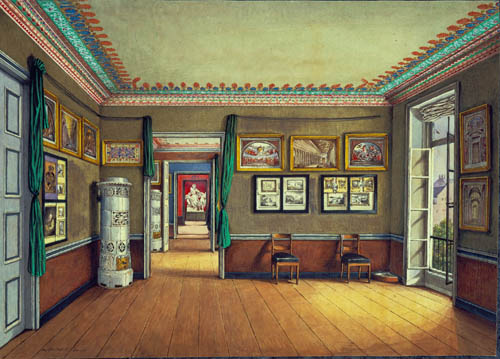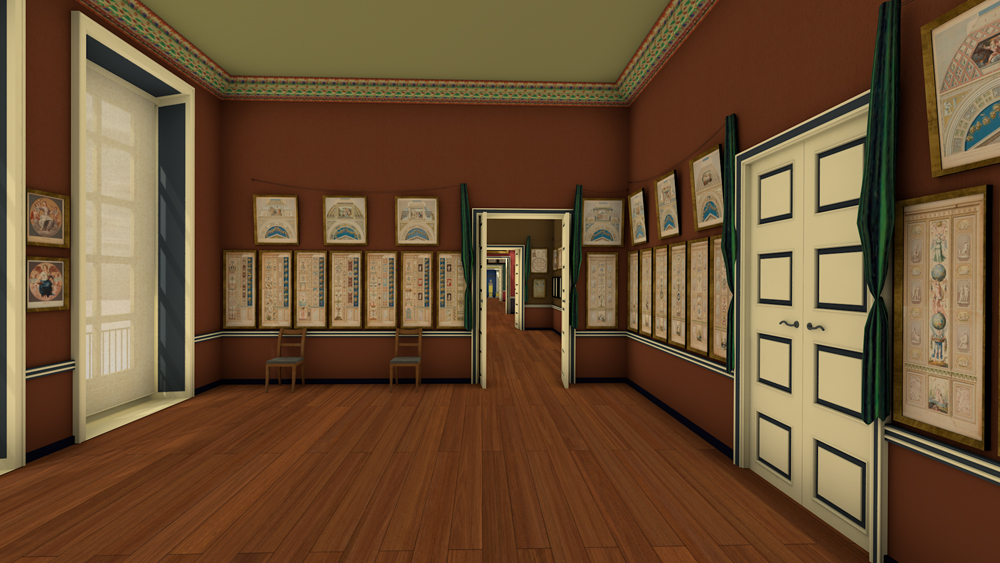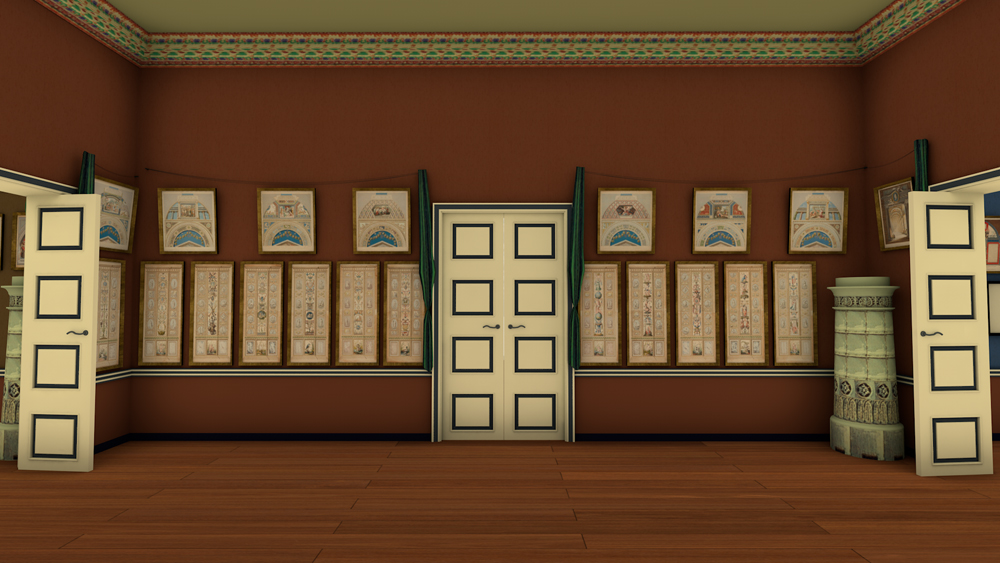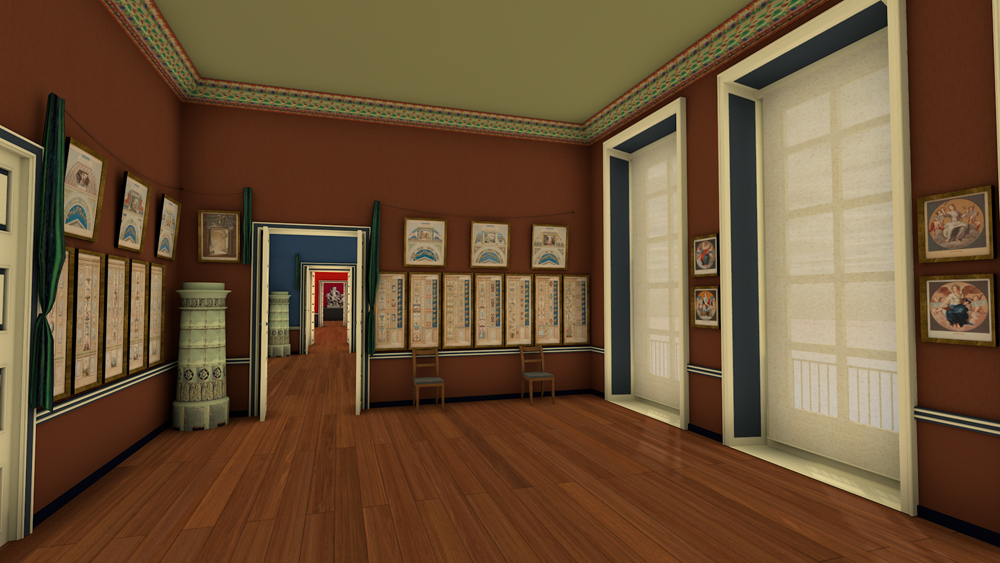1833 Central reception room
Raphael as a benchmark
for Antiquity and the present
“When entering the first room, one will already start to feel well. While the first rooms are small, the casts of antique sculptures beckon on the left, while to the right the painting gallery opens up to you. This fleeting glance, crossing so many centuries, offers plenty of pleasantness and comfort.”
The unknown critic of the “Kunst-Blatt” of 6 March 1834 put into words the spectacular experience visitors had when entering the first exhibition room: looking to the left and to the right, a bridge was struck between Antiquity and modern art.
Visible on one side was the cast of the Hellenistic “Laocoön Group”, while on the other side one could see the bust of the founder, Johann Friedrich Städel, in the centre of the Italian room. The art of Raphael formed the pivot point. His decoration of the Loggias of the Vatican palace were displayed in the first room through colourised engravings of the late eighteenth century. These prints provided an impression of the ornamental richness of the Renaissance, yet they did not solely serve a decorative purpose. They were intended to prepare the visitor for the painting gallery. Since Raphael’s designs had been inspired by antique grotesques, they functioned as a connecting link. Raphael’s “Loggias” set the benchmark for both the look back to Antiquity, as well as for the confrontation with modern and contemporary painting. By studying them, the visitor was able to develop a preconception of what constitutes art and how it should be made.

Basis
for the reconstruction
The view inside the reception rooms reveals the possibilities and limitations of the virtual reconstruction. No hanging plans for these rooms exist. Additionally, the publications of around 1833 only summarily mention what was put on display here. Under the assumption that little had changed since the opening in 1833, the “Verzeichniss der öffentlich ausgestellten Kunst-Gegenstände” (“Directory of Publicly Exhibited Art Objects”) of 1844 was used as an additional source.
Based on our knowledge of the collection and the spatial conditions derived from the floor plan, it is possible to propose a plausible reconstruction of the presentation. Of course, the details remain rather speculative. The wall sections that were possible to compare to Mary Ellen Best’s representation of 1835 formed an important starting point. Yet, as faithful Best may have been regarding specific details, it is also clear that her watercolour painting conveys a different overall spatial impression. This is because she represented the rooms as much lower in height than they were in actuality.





